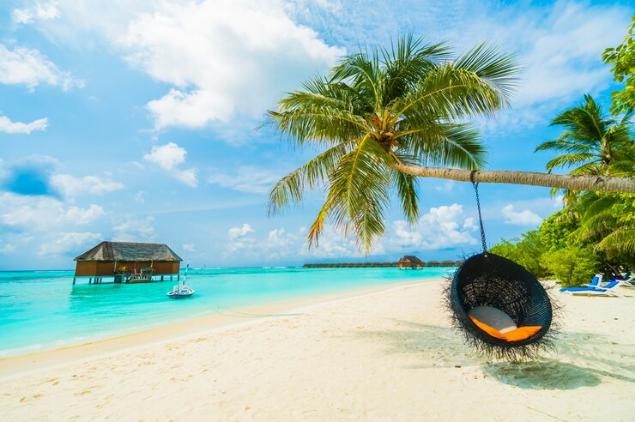In the vast expanses of the Indian Ocean and the Pacific Ocean lie two archipelagos that evoke a sense of wonder and mystery: the Galápagos Islands and Madagascar. These remote and biodiverse regions have captured the imagination of adventurers and naturalists alike for their unique ecosystems, endemic species, and breathtaking landscapes. Exploring these enchanted isles offers a glimpse into evolutionary marvels and ecological diversity found nowhere else on Earth.
Galápagos Islands: Nature’s Laboratory
Located 600 miles off the coast of Ecuador, the Galápagos Islands are renowned as a “living laboratory” of evolution. These volcanic islands, shaped by geological forces over millions of years, harbor an astonishing array of flora and fauna that inspired Charles Darwin’s theory of evolution by natural selection. Each island in the archipelago boasts distinct ecosystems, from lush highlands with mist-shrouded forests to barren lava fields where marine iguanas bask in the sun.
One of the Galápagos’ most iconic residents is the giant tortoise, a symbol of endurance and longevity. These gentle giants roam freely across the islands, their shells adapted to the unique environments of their respective habitats. Encounter blue-footed boobies performing their courtship dances, marine iguanas diving into the crystal-clear waters to feed on algae, and Galápagos penguins darting through the ocean currents—all living testaments to the archipelago’s biodiversity.
Snorkeling in the Galápagos reveals an underwater paradise teeming with life. Swim alongside playful sea lions, graceful sea turtles, and colorful reef fish in the nutrient-rich waters that support a delicate balance of marine ecosystems. Above the waves, pelagic birds such as waved albatrosses and frigatebirds soar effortlessly, their wingtips barely skimming the ocean’s surface as they hunt for fish.
Madagascar: Island of Marvels
Off the southeastern coast of Africa lies Madagascar, the world’s fourth-largest island and a hotspot of biodiversity unlike any other. Isolated from mainland Africa for millions of years, Madagascar’s flora and fauna have evolved in splendid isolation, resulting in an astonishing 90% of its wildlife found nowhere else on Earth. From dense rainforests to spiny forests and vast savannas, the island’s landscapes are as diverse as its inhabitants.
The lemurs of Madagascar are perhaps its most famous residents, with over 100 species ranging from the tiny mouse lemur to the charismatic ring-tailed lemur. These primates display a range of behaviors and adaptations, from the indri’s haunting calls echoing through the rainforest canopy to the sifaka’s acrobatic leaps among the branches. Discover elusive chameleons blending seamlessly into their leafy habitats and fossas, the island’s largest carnivores, stealthily prowling through the undergrowth.
Madagascar’s cultural tapestry is as vibrant as its natural wonders, shaped by the influences of Austronesian, African, Arab, and European settlers. Explore bustling markets where merchants sell spices and handicrafts, or visit remote villages where traditional practices and beliefs endure. The Malagasy people’s warmth and hospitality offer a glimpse into a way of life intricately intertwined with the island’s rich biodiversity.
Contrasts and Connections
While the Galápagos Islands and Madagascar differ in geography and evolutionary history, both are sanctuaries of endemic species and ecosystems facing environmental challenges. The Galápagos’ volcanic origins and harsh conditions have shaped its wildlife, fostering adaptations that are marvels of natural selection. In contrast, Madagascar’s isolation and diverse landscapes have given rise to an unparalleled richness of biodiversity, with species ranging from the bizarre aye-aye to the regal baobab tree.
Human impact on these fragile ecosystems is a pressing concern. In the Galápagos, conservation efforts are critical to protecting endangered species such as the Galápagos giant tortoise and preserving delicate marine habitats from the pressures of tourism and climate change. Similarly, Madagascar faces challenges from deforestation, habitat loss, and poaching, threatening the survival of its unique wildlife and the livelihoods of local communities.
Exploring the Galápagos Islands and Madagascar is not just a journey through spectacular landscapes and encounters with rare wildlife; it is a testament to the resilience of Earth’s natural wonders and the importance of conservation efforts. Whether marveling at tortoises that outlived Darwin’s voyage or witnessing lemurs leaping through rainforest canopies, these enchanted isles offer a profound connection to the wonders of evolution and the urgent need to protect our planet’s biodiversity.
In conclusion, the Galápagos Islands and Madagascar beckon explorers with their allure of endemic species, stunning landscapes, and rich cultural tapestries. From the volcanic landscapes of the Galápagos to the biodiversity hotspots of Madagascar, each island offers a unique window into the wonders of evolution and the challenges facing our planet’s natural heritage. As travelers immerse themselves in these enchanted isles, they are reminded of the delicate balance between human progress and environmental conservation, ensuring that future generations can continue to marvel at Earth’s extraordinary diversity.
